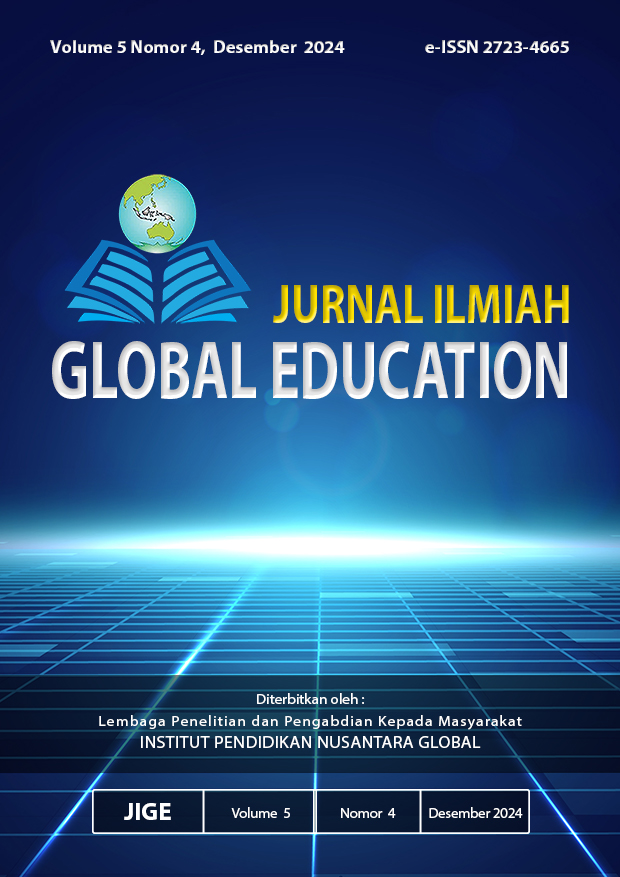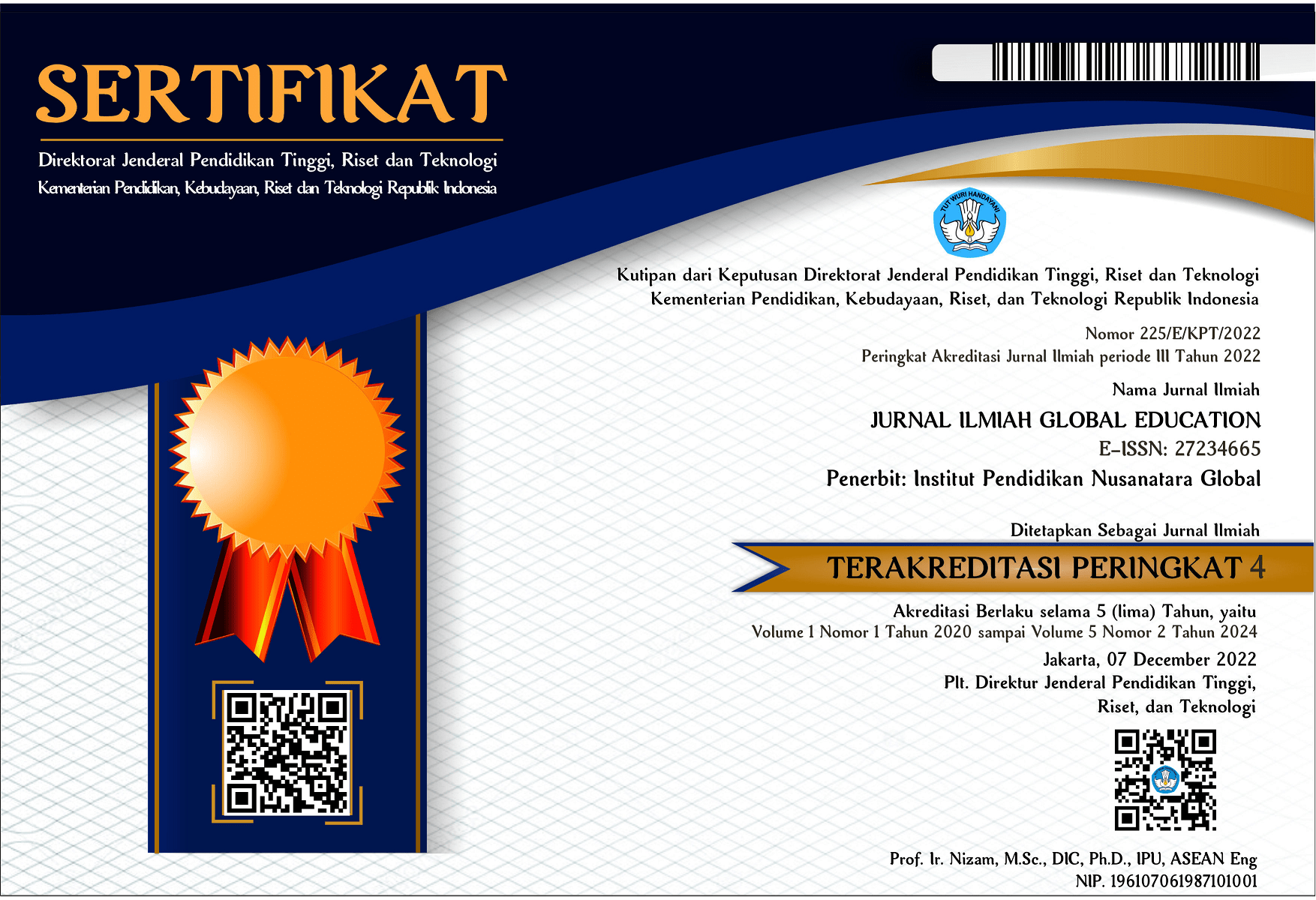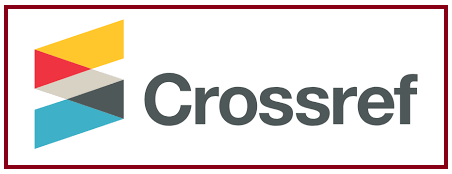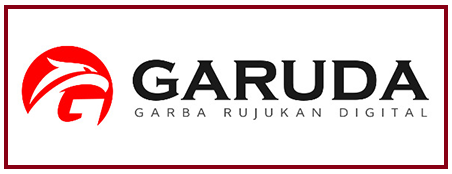Strategies for Tourism Product Diversification to Enhance Competitiveness and Quality in Meat Tourism Village
DOI:
https://doi.org/10.55681/jige.v5i4.3608Keywords:
Product Diversification, Sustainable Tourism, Meat Tourism Village, CompetitivenessAbstract
Agriculture is the cornerstone of Meat's economy, with fertile lands yielding vegetables, fruits, and coffee for local consumption and sale in regional markets. The village also shows promise for agritourism, integrating farming activities into tourism. Natural attractions include trekking, cycling, and lakeside relaxation, catering to tourists seeking serenity. Infrastructure development has recently aligned with sustainable tourism principles to balance cultural preservation, environmental conservation, and community welfare. This study examines strategies for tourism product diversification to enhance Meat’s competitiveness and appeal. Diversification involves developing new offerings alongside existing ones to attract varied audiences and ensure sustainability by spreading tourism activities across sectors. The qualitative descriptive approach utilizes field observation, interviews, literature reviews, and documentation, with triangulation ensuring data validity. Findings underscore Meat’s strengths in natural and cultural assets while highlighting challenges like limited infrastructure and unstructured tourism packages. Recommendations include product innovation, digital marketing, local resource optimization, and sustainable practices. These efforts aim to boost visitor satisfaction, elevate community welfare, and position Meat Tourism Village as a premier sustainable destination around Lake Toba.
Downloads
References
Annisa Virgin, P., Turniningtyas, A. R., & Siregar, J. P. (2022). Studi Komparasi Strategi Sustainable Livelihood Kampung Heritage Kajoetangan dan Kampung Ornament Tjelaket Kota Malang. Turniningtyas Ayu R. 2 Dan Johannes Parlindungan Siregar, 2(1). http://sostech.greenvest.co.id
Çakır, O., Evren, S., Tören, E., & Kozak, N. (n.d.). Utilizing the Sustainable Livelihoods Approach to Evaluate Tourism Development from the Rural Host Communities’ Point of View: The Case of Cappadocia (Turkey) Oral History Project on Tourism and Hospitality Industry in Turkey (1923-2013) View project Türkiye Turizm Tarihi View project. http://gtg.webhost.uoradea.ro/
Gai, A. M., & Si, M. (2020). Pemberdayaan Masyarakat Nelayan Berbasis Sustainable Livelihood di Pesisir Kota Surabaya. www.dreamlitera.com
Ghazali, M. (2023). PENERAPAN SUSTAINABLE LIVELIHOOD FRAMEWORK DI PULAU KECIL TERLUAR, STUDI KASUS: PULAU MARATUA. Jurnal Kelautan Dan Perikanan Terapan (JKPT), 1, 97. https://doi.org/10.15578/jkpt.v1i0.12055
Hardati, P. (n.d.). HUMAN RESOURCES ASSET CONTRIBUTION TO LIVELIHOODS ASSET IN SEMARANG REGENCY, CENTRAL JAVA PROVINCE, INDONESIA.
Hubner, I. B., Pramono, R., Bernedeta Sitorus, N., & Lemy, D. M. (n.d.). Implementation of the Four Pillars of Sustainable Tourism Destinations in the Tourism Village of Kampung Keranggan, South Tangerang. https://doi.org/10.33258/birci.v5i1.3639
Irene, N., & Sitorus, B. (n.d.). PERAN DAN KOLABORASI STAKEHOLDER PARIWISATA DALAM MENDUKUNG PENINGKATAN KUNJUNGAN WISATA DI KAWASAN DANAU TOBA [Role And Collaboration Of Tourism Stakeholders In Supporting Increased Tourism Visits In The Lake Toba Area]. Hasil Penelitian Jurnal Hospitality Dan Pariwisata, 6(2), 56–105. https://doi.org/10.30813/.v6i2.2416
Juliana, Parani, R., Sitorus, N. I. B., Pramono, R., & Maleachi, S. (2021). Study of community based tourism in the district west Java. International Journal of Sustainable Development and Planning, 16(2), 277–285. https://doi.org/10.18280/IJSDP.160207
Kheiri, J., & Nasihatkon, B. (2016). The Effects of Rural Tourism on Sustainable Livelihoods (Case Study: Lavij Rural, Iran). Modern Applied Science, 10(10), 10. https://doi.org/10.5539/mas.v10n10p10
Ma, J., Zhang, J., Li, L., Zeng, Z., Sun, J., Zhou, Q. (Bill), & Zhang, Y. (2018). Study on livelihood assets-based spatial differentiation of the income of natural tourism communities. Sustainability (Switzerland), 10(2). https://doi.org/10.3390/su10020353
Mayolita Panjaitan, R. Hamdani Harahap, & Hadriana Marhaeni Munthe. (2023). Pemberdayaan Masyarakat Dalam Pengembangan Wisata Desa Kuta Jungak Kecamatan Siempat Rube Kabupaten Pakpak Bharat Provinsi Sumatera Utara. PERSPEKTIF, 12(1), 171–184. https://doi.org/10.31289/perspektif.v12i1.8108
Melles, G. B. (n.d.). Design Science and Innovation Designing Social Innovation for Sustainable Livelihoods. https://link.springer.com/bookseries/15399
Natarajan, N., Newsham, A., Rigg, J., & Suhardiman, D. (2022). A sustainable livelihoods framework for the 21st century. World Development, 155. https://doi.org/10.1016/j.worlddev.2022.105898
Prasad, V., & Lalrinpuia Vangchhia, S. (n.d.). SPRINGER BRIEFS IN ENVIRONMENTAL SCIENCE A Sustainable Livelihood Approach to Poverty Reduction An Empirical Analysis of Mizoram, the Eastern Extension of the Himalaya. http://www.springer.com/series/8868
UU Nomor 10 Tahun 2009. (n.d.).
Downloads
Published
How to Cite
Issue
Section
License
Copyright (c) 2024 Nova Bernedeta Sitorus, Jastrid Caroline Herera Sinaga, Zul Fadhly Sofyan, Windy Ratu Karina, Tiara Sisdeo Br Tampubolon, Hendro Simeon Naibaho, Muhammad Fahrizal Fauzy, Norman Albert Wilfried Sitohang

This work is licensed under a Creative Commons Attribution-ShareAlike 4.0 International License.













